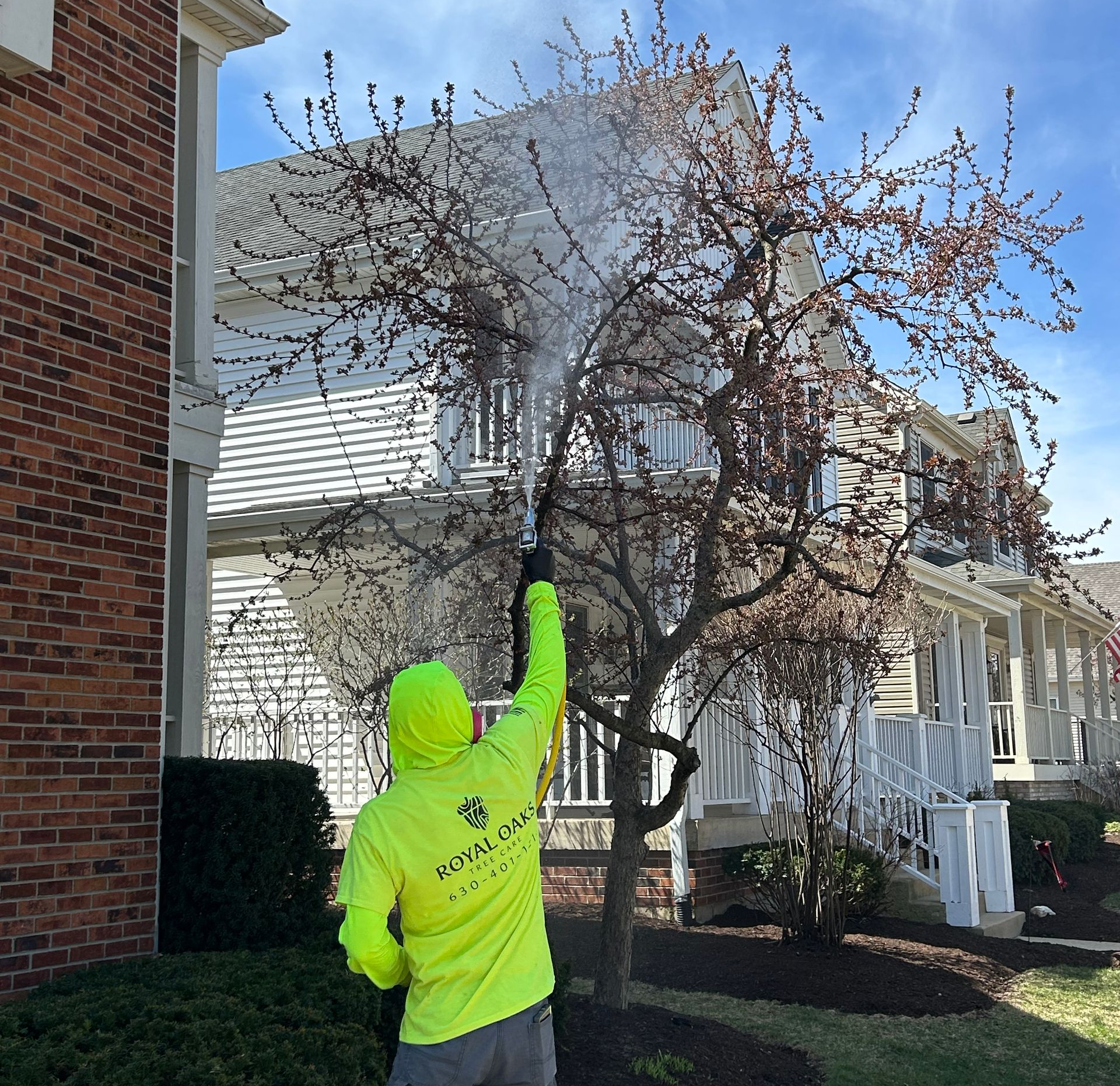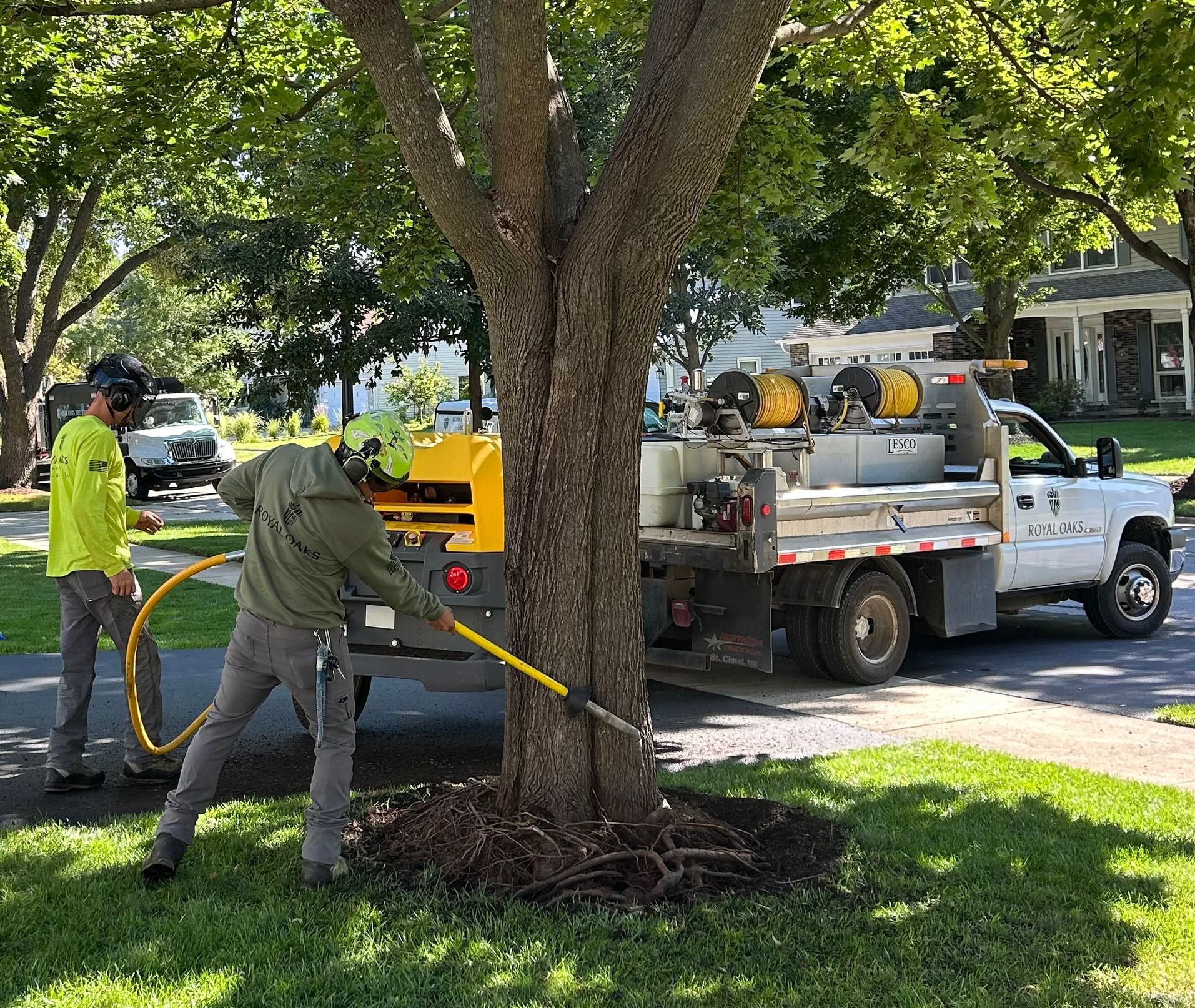PLANT HEALTH CARE
What are some common tree diseases in our area?
-Bur Oak Blight in Oak trees
-Verticillium Wilt in Maple trees
-Diplodia Tip Blight Disease in Pine trees
-Dutch Elm Disease in American Elm trees
-Chlorosis or Iron deficiency in River Birch trees
-Rhizosphaera Needle Cast Disease in Spruce trees
-Apple Scab and Rust in Crabapple and Hawthorne trees
What are some common tree insect issues?
-Spruce Spider Mites in Spruce trees
-Scale insect infestation in Magnolia trees
-Emerald Ash Borer infestation in Ash trees
-Bronze Birch Borer infestation in Paper Birch trees
-Two Lined Chestnut Borer infestation in Oak trees
-Bronze Birch Borer infestation in Paper Birch trees
-Zimmerman Pine Moth Borer infestation in Pine trees
How can I identify insect infestations?
Insects like aphids, beetles, and borers can wreak havoc on your trees. Look for signs such as holes in the bark, sticky residue or pitch run on the trunk, holes in the leaves or visible insects. Early detection is key to preventing serious damage.
What are the best prevention methods?
Proper pruning, watering, mulching and feeding are some of the biggest keys to keeping your trees healthy. In addition, having your trees evaluated by one of our certified arborists on an annual basis ensures that any potential issues are identified and addressed in a timely manner.




